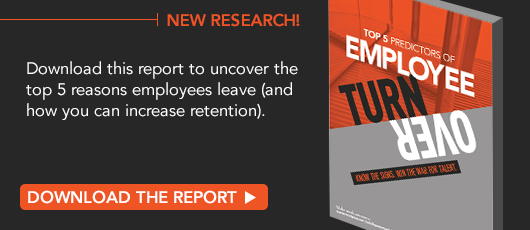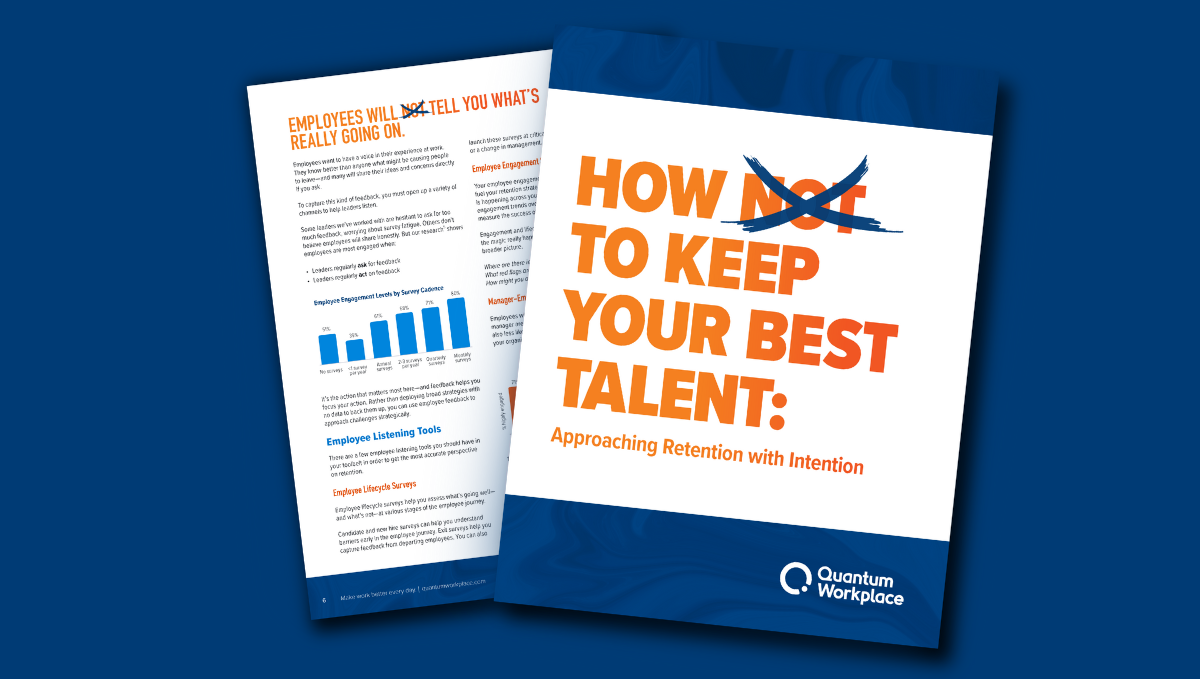How to Calculate Your Employee Retention Rate
Your employee retention rate is a critical business metric. It highlights how many employees choose to stay at your organization. It also gives valuable insight into whether your engagement and retention initiatives are working or not.
If you don’t have a pulse on employee retention, you risk losing your top performers. And when these employees leave, you can experience low productivity levels, reduced company expertise, poor employee morale, and high recruitment and onboarding costs.
This article will help you calculate your employee retention rate to uncover the significance of your turnover problems and drive company growth.
What is an employee retention rate?
Your employee retention rate is a telling metric, giving insight into the employee experience. In short, it’s the percentage of employees that stay at your organization during a given time period.
But your employee retention rate is so much more than a simple calculation. It helps you understand whether you are succeeding—or not—in creating a positive employee experience that engages and motivates your talent. By comparing retention rates over a given time period, you can understand what’s lacking or improving in the employee experience to make adjustments.
Employee retention rate vs employee turnover rate
Employee retention rate is defined as the percentage of your workforce that stays at your organization. Employee turnover rate is the percentage of employees that leave your organization. Leaders should strive for a high retention rate and a low turnover rate to drive optimal results.
Employee retention rate formula
The formula to calculate your unique retention rates is simple and straightforward. Divide the number of employees who have stayed throughout a given time period by the initial amount of employees in said time period, and multiply by 100:
(Remaining headcount during set period/ Starting headcount during set period) x 100
How to calculate your employee retention rate
When calculating your employee retention rate, it’s important to outline a time frame that you would like to measure, typically on a yearly or quarterly basis. You also need to have the headcount of employees at the start and end of that time frame.
By dividing the end amount of employees during your set period by the beginning amount, and multiplying by 100, you can determine your turnover rate.
You may want to separate your calculations by voluntary and involuntary turnover. This allows you to calculate the percentage of employees who were laid off vs those who left your organization by choice.
Easy examples of employee retention rate calculation
Let’s say you had 475 employees on January 1st 2021 and 440 employees on December 31st 2021. To calculate your yearly retention rate, divide 440 by 475 and multiply by 100.
(440 / 475) x 100= 92.6% yearly retention rate.
You have 33 employees on July 1st and 28 employees on September 30th. To calculate your retention rate in this time period, divide 28 by 33 and multiply by 100.
(28 / 33) x 100= 84.8% retention rate in July through September.
Your organization has 1,455 employees at the beginning of Q2 2021 and 1,375 at the end of Q2. To calculate your retention rate in Q2, divide 1,375 by 1,455 and multiply by 100.
(1,375 / 1,455) x 100= 94.5 % retention rate in Q2.
Employee Retention Rate Calculator
Why is employee retention rate important
Your talent is your organization’s most valuable asset. They drive the initiatives that keep your organization successful. Without your talent, you have no means to achieve business goals. That’s why adopting effective retention strategies is important. When these strategies are in place, you can experience:
- High productivity levels
- Skilled and experienced employees
- Better customer experience
- Improved workplace culture
- Cost reduction
- Employee morale improvement
Strategies to improve your employee retention rate.
- Make the right hiring decisions
Communicate expectations clearly and ensure candidate skill sets fit the role. Evaluate whether a candidate aligns with your company culture and think about how well—or not—they would fit into your team. - Create a robust onboarding process
Your onboarding experience should last at least a year to ensure your employees are comfortable in their role. Use this process to reinforce expectations, communicate what to expect, connect new hires to the team, and start planning for the long-term future. - Build a culture of recognition and feedback
Your employees should feel valued in their role. Asking for feedback and giving recognition for achievements makes employees feel seen and heard. And when this is the case, they are less likely to seek validation elsewhere. Create a continuous listening strategy with employee surveys, conduct regular one-on-ones, and leverage a recognition platform to prioritize the employee experience. - Develop your employees
For your employees to stay, they need to feel like they have a future at your organization. That’s why it’s important to prioritize employee development. These can include internal hiring, coaching and mentorship, and long-term goal planning. By prioritizing these opportunities and activities, you communicate your employees’ value to the company while actively helping them grow.
How employee engagement software can help your retention rate.
- One-on-Ones
One-on-ones help boost employee manager alignment. To keep your top performers, stay updated on the employee experience with a streamlined one-on-one platform. The right software will provide a template to help outline talking points and drive your conversations. - Recognition
Employees need to feel valued for their accomplishments. When they don’t, they tend to look elsewhere for recognition. It’s important to build recognition into your culture so that your employees know they are seen and appreciated. Consider implementing a recognition platform that helps you provide acknowledgments with ease, and elevates them to the entire organization. - Flight risk analysis
Flight risk analysis tools help you understand who’s at risk for leaving. By identifying these employees, you can take action to improve their experience and drive their desire to stay. - Employee surveys
Employee surveys help you gain valuable insight into the employee experience. Understand your employees’ perceptions with pulse, engagement, and lifecycle surveys to see where you can make adjustments to retain top talent. - Goals
Goals help motivate and drive employees toward results. They help ensure your employees have a plan of action that gives them purpose in your organization. Leverage a platform that streamlines the goal setting and tracking process and elevates your metrics to the entire organization. - Feedback
Two-way feedback is important in any growth-minded business. Without it, employees don’t know where they’re falling short and leaders don’t have employee insight toward improvement. The right feedback tool will create a culture of continuous listening while boosting trust and performance. - Talent reviews
Talent reviews help leaders understand the overall state of their talent to make important business decisions. Leverage a simple tool that elevates top performers and talent risk to take action toward success and growth.
To boost your retention rates, uncover possible reasons your employees might leave with our ebook, The Top 5 Predictors of Employee Turnover. 






